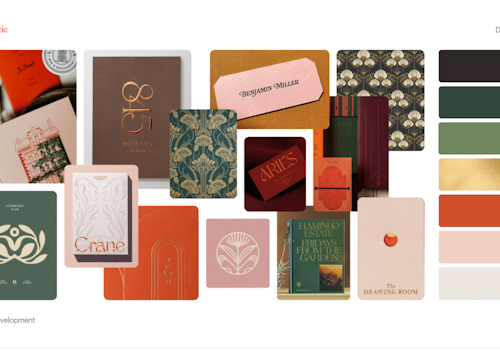
A small café opens on the corner of a busy street, directly across from a Dunkin' Donuts. Dunkin' has the polished signage, the expansive menu, and all the advantages of corporate backing. But before long, the little café earns a loyal cult following. It becomes the kind of place people are willing to wait for. Dunkin' turns into the fallback option—the place you go when the café is too packed.
Why?
Because the café serves the perfect cappuccino. Its pastries are baked fresh with local ingredients. The baristas greet customers by name. The interior feels like a Parisian hideaway, not a fluorescent pit stop. People don’t come for convenience or the $4 meal deal. They come for craft, connection, and a place that feels personal. And yes, they’re willing to pay double or triple what they’d pay at Dunkin'—because the experience, the flavor, and the brand all reflect quality they can actually feel.
The same principle holds true in multifamily development. In a landscape crowded with large, faceless buildings, the goal isn’t to scale up. The opportunity for boutique buildings is to stand out.
In a sea of sameness, boutique multifamily developers have a rare opportunity to stand out. Not by mimicking institutional counterparts, but by going deeper into human experience, design, and brand. Developers who lean into the emotional and cultural resonance of their properties consistently outperform competitors, even those with bigger footprints and deeper pockets.
The truth is simple: thoughtful differentiation beats default design. When you only need 80 raving fans instead of 600 mildly interested renters, the path to success becomes more strategic than it is expensive.
Developers are often told to play it safe. The result is a wave of cookie-cutter buildings with forgettable branding and templated amenities that try to serve everyone but end up connecting with no one. Ironically, the best way to reduce risk in a boutique multifamily investment isn’t by sticking to the status quo. It’s by embracing smart, specific differentiation.
By taking the time to create a culturally relevant, emotionally resonant brand identity, boutique buildings can stand out. Large institutional properties rely on scale and standardization. Boutique projects succeed by offering clarity of purpose and curated experiences that speak directly to their audience. You don’t need a 5,000-square-foot gym or a climbing wall to win. You need to create a place that resonates.
A small building will never compete with a 500-unit development when it comes to amenity volume. It shouldn’t try. Instead of offering a checklist of features, boutique developers can design smaller, purposeful spaces that tell a story.
Imagine a fireplace room in Minnesota, perfect for long winters and intimate gatherings. A yoga and meditation space designed around wellness, not just fitness. A speakeasy-inspired lounge that feels more like a curated bar than a generic common room. These are not expensive upgrades. They are intentional design decisions that transform perception and drive value.
By focusing on lifestyle over square footage, and by anchoring the design in local culture, boutique buildings can create experiences that feel far more luxurious and personal than their larger counterparts.
Many multifamily brands still look like they were pulled from a default setting. RentCafe templates, vague names, and generic signage dominate the landscape. For boutique developers, this presents a clear opportunity.
A great brand is not just a logo or a color palette. It is a feeling. It is the sense of connection a resident has when they walk through the door. The best projects integrate design, architecture, local identity, and storytelling into a cohesive experience. They create places people remember and recommend.
But the brand can only live if the team understands it. Leasing agents and property managers need to be fluent in what makes the building unique. They must know how to speak about it and how to sell it in a way that reinforces its identity. That operational alignment is just as important as the physical design.
Boutique buildings have fewer units, which can be a huge strength. With a smaller resident base, you can create high-touch, meaningful experiences. Infill locations often bring the added benefit of walkable access to culture and commerce. Those built-in surroundings can be leveraged as lifestyle assets without adding cost to construction.
Projects like Kenton House in St. Paul or The Bond in Boston succeed because they were built with intention. They didn’t try to be everything to everyone. They chose a clear lane, crafted a story around it, and found their people. That kind of focus is what drives demand and long-term value.
Fear is a natural part of development. But the biggest myth in multifamily today is that playing it safe reduces risk. It doesn’t. Bland buildings with generic brands are forgettable and easy to pass over.
The buildings that take a position, tell a story, and focus on a specific lifestyle are the ones that lease faster, generate buzz, and command higher rents. In a market full of sameness, being distinct is not just a creative decision. It’s a business strategy.
So here’s the real choice. Blend in with the masses and hope for the best. Or build something that matters, that resonates, and that people are proud to call home. In my experience, it’s the bold ideas that win every time.

Discover how data-driven branding strategies can accelerate leasing, boost NOI, and turn your multifamily property's identity into a measurable performance asset.

Your brand’s reputation is built—or broken—at the leasing desk. Are you ready to unify leasing and marketing to protect it?

Remember when we all DIY dip-dyed our hair in Kool-aide and learned just because you can do it yourself doesn't mean you should? This week we're digging into the hidden costs of DIY'd branding.

This week, we're breaking down the biggest misunderstandings Developers often face when it comes to branding their lease-up.
A simple read in under 5 minutes, delivered to your inbox Saturday mornings.
A simple read in under 5 minutes, delivered to your inbox Saturday mornings.